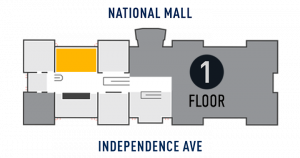Charles Lawrance, originally a race car engine designer, built his first air-cooled aircraft engine in 1921 for a Navy contract. The 149 kW (200 hp) J-1 satisfied a Navy need for a compact lightweight engine for use on aircraft carriers and not plagued with water leakage problems.
Progressing through design stages, the most well known model J-5 used advanced engineering features; such as sodium cooled exhaust valves and aluminum cylinder heads. Despite its higher initial cost relative to other engines available at the time, its reliability and lower operating cost resulted in widespread use among many aircraft manufacturers. The Wright Whirlwind J-5 engine powered aircraft such as the Fokker F-7, Ford 4-AT Trimotor, Pitcairn PA-5, and Fairchild FC-2.
The most famous Wright Whirlwind application was the 1927 New York-to-Paris flight of Charles Lindbergh. In 1928, Charles Lawrance was awarded the Collier Trophy for the outstanding performance of his engines based on records set in 1927.
Display Status
This object is on display in America by Air at the National Air and Space Museum in Washington, DC.

Object Details
Date
Circa 1928
Country of Origin
United States of America
Type
PROPULSION-Reciprocating & Rotary
Designer
Lawrance Aero Engine Corp
S. D. Heron
Manufacturer
Wright Aeronautical
Physical Description
Type: Reciprocating, Radial, 9 cylinders, air-cooled
Power rating: 149 kW (200 hp) at 1,800 rpm
Displacement: 12.9 L (788 cu in)
Bore and Stroke: 114 mm (4.5 in) x 140 mm (5.5 in)
Weight: 231 kg (508 lb)
Dimensions
3-D: 86.4 × 114.3cm, 230.4kg (34 × 45 in., 508lb.)
Support: 91.4 × 139.7 × 76.2cm (36 × 55 × 30 in.)
Materials
Metal, plastic, rubber
Inventory Number
A19791508000
Credit Line
Donated by Juan T. Trippe
Data Source
National Air and Space Museum
Restrictions & Rights
Usage conditions apply
For more information, visit the Smithsonians Terms of Use.